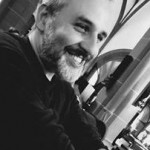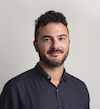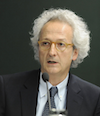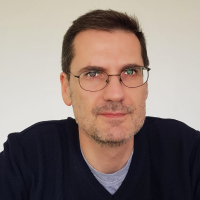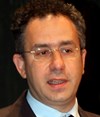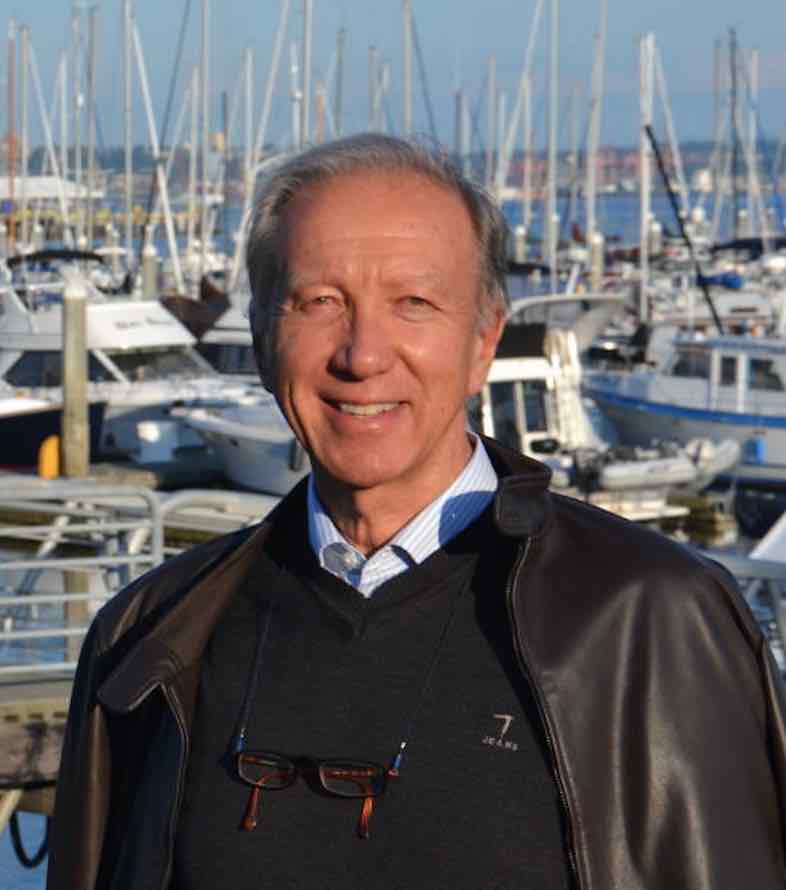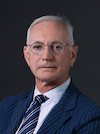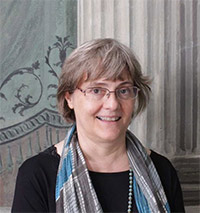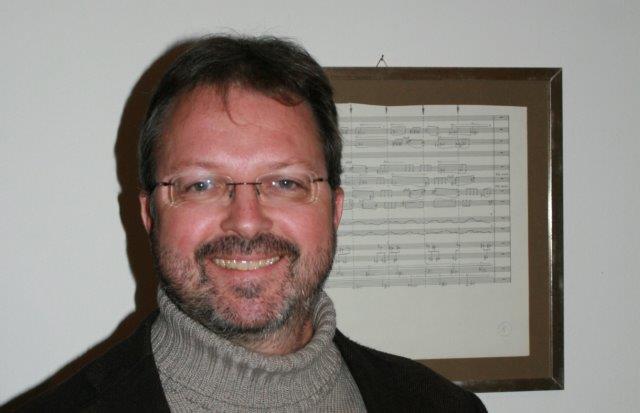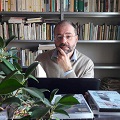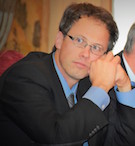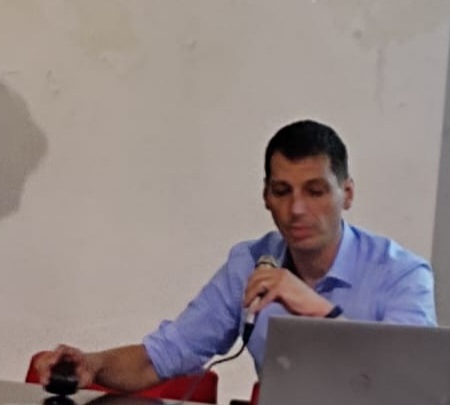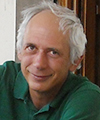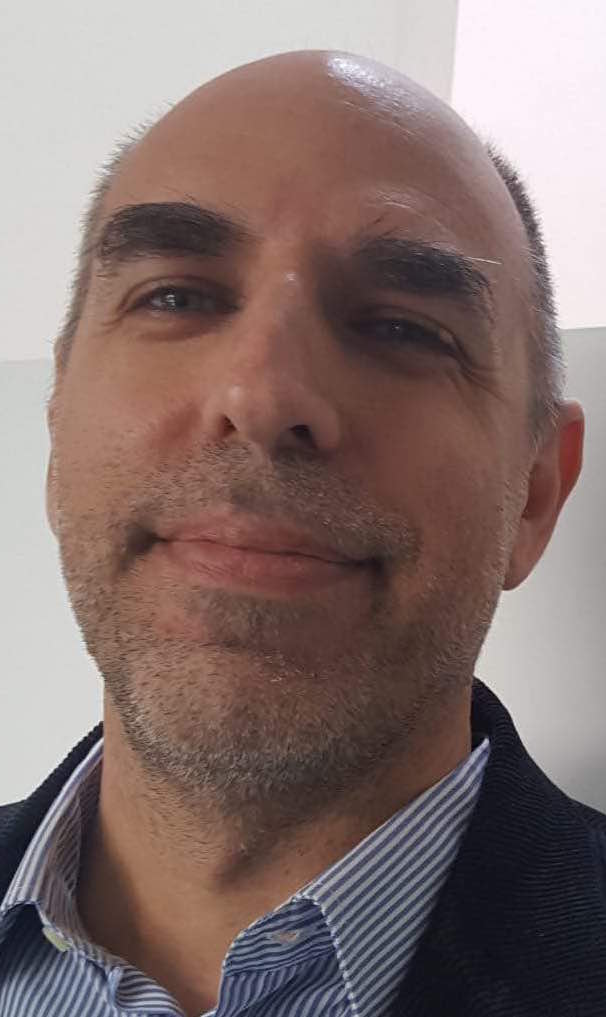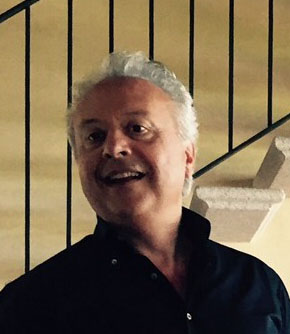Studying at the University of Verona
Here you can find information on the organisational aspects of the Programme, lecture timetables, learning activities and useful contact details for your time at the University, from enrolment to graduation.
Academic calendar
The academic calendar shows the deadlines and scheduled events that are relevant to students, teaching and technical-administrative staff of the University. Public holidays and University closures are also indicated. The academic year normally begins on 1 October each year and ends on 30 September of the following year.
Course calendar
The Academic Calendar sets out the degree programme lecture and exam timetables, as well as the relevant university closure dates..
| Period | From | To |
|---|---|---|
| 1° semestre lezioni a Trento | Sep 13, 2021 | Dec 22, 2021 |
| 1 A | Sep 27, 2021 | Nov 6, 2021 |
| 1 B | Nov 15, 2021 | Jan 12, 2022 |
| 2° semestre lezioni a Trento | Feb 14, 2022 | May 27, 2022 |
| 2 A | Feb 14, 2022 | Mar 26, 2022 |
| 2 B | Apr 4, 2022 | Jun 4, 2022 |
| Session | From | To |
|---|---|---|
| Sessione d'esame invernale | Jan 10, 2022 | Feb 12, 2022 |
| Sessione d'esame estiva | Jun 6, 2022 | Jul 23, 2022 |
| Sessione d'esame autunnale | Aug 29, 2022 | Sep 24, 2022 |
| Session | From | To |
|---|---|---|
| Sessione straordinaria (a.a. 2020/21) | Mar 28, 2022 | Apr 2, 2022 |
| Sessione estiva | Jul 11, 2022 | Jul 16, 2022 |
| Sessione autunnale | Nov 7, 2022 | Nov 12, 2022 |
| Sessione straordinaria | Mar 31, 2023 | Apr 6, 2023 |
| Period | From | To |
|---|---|---|
| Festività natalizie | Dec 24, 2021 | Jan 2, 2022 |
| Festività pasquali | Apr 15, 2022 | Apr 19, 2022 |
| Festività Santo Patrono di Verona | May 21, 2022 | May 21, 2022 |
| Chiusura estiva | Aug 15, 2022 | Aug 20, 2022 |
Exam calendar
Exam dates and rounds are managed by the relevant Culture and Civilisation Teaching and Student Services Unit.
To view all the exam sessions available, please use the Exam dashboard on ESSE3.
If you forgot your login details or have problems logging in, please contact the relevant IT HelpDesk, or check the login details recovery web page.
Academic staff

Bassetti Massimiliano
 massimiliano.bassetti@univr.it
massimiliano.bassetti@univr.it
 045802 8376
045802 8376
 riccardo.bertolazzi@univr.it
riccardo.bertolazzi@univr.it
 luca.bochicchio@univr.it
luca.bochicchio@univr.it
 giovanni.ciappelli@univr.it
giovanni.ciappelli@univr.it
 dario.donetti@univr.it
dario.donetti@univr.it
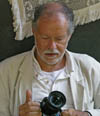
Mastrocinque Attilio
 attilio.mastrocinque@univr.it
attilio.mastrocinque@univr.it
 +39 045802 8386
+39 045802 8386
 alberto.scandola@univr.it
alberto.scandola@univr.it
 emanuele.vaccaro@unitn.it
emanuele.vaccaro@unitn.it
 paola.venturelli@univr.it
paola.venturelli@univr.it
Study Plan
The Study Plan includes all modules, teaching and learning activities that each student will need to undertake during their time at the University.
Please select your Study Plan based on your enrollment year.
1° Year
| Modules | Credits | TAF | SSD |
|---|
History of Art Criticism I - LM
History of Medieval Art I
History of Modern Art I - LM
History of Contemporary Art I - LM
Cultural Heritage Law - LM
1 module among the followingContemporary History I - LM
Early Modern History I - LM
1 module among the followingHistory of Modern Art II - LM
2° Year activated in the A.Y. 2022/2023
| Modules | Credits | TAF | SSD |
|---|
4 modules among the followingArchaeology and History of Greek and Roman Art (m)
Contemporary Italian Literature II
History of Classic Tradition (m)
History of Science and Technology - LM
History of Theatre and Performing Arts II - LM
Hystory of Christianity and of the Churches
Italian Literature II - LM
Latin literature I - LM
Medieval Latin Literature II
| Modules | Credits | TAF | SSD |
|---|
History of Art Criticism I - LM
History of Medieval Art I
History of Modern Art I - LM
History of Contemporary Art I - LM
Cultural Heritage Law - LM
1 module among the followingContemporary History I - LM
Early Modern History I - LM
1 module among the followingHistory of Modern Art II - LM
| Modules | Credits | TAF | SSD |
|---|
4 modules among the followingArchaeology and History of Greek and Roman Art (m)
Contemporary Italian Literature II
History of Classic Tradition (m)
History of Science and Technology - LM
History of Theatre and Performing Arts II - LM
Hystory of Christianity and of the Churches
Italian Literature II - LM
Latin literature I - LM
Medieval Latin Literature II
| Modules | Credits | TAF | SSD |
|---|
Legend | Type of training activity (TTA)
TAF (Type of Educational Activity) All courses and activities are classified into different types of educational activities, indicated by a letter.
History of Architecture (m) (2022/2023)
Teaching code
4S02329
Teacher
Coordinator
Credits
6
Language
Italian
Scientific Disciplinary Sector (SSD)
ICAR/18 - HISTORY OF ARCHITECTURE
Period
1 A dal Sep 26, 2022 al Nov 5, 2022.
Location
VERONA
Learning objectives
The course aims to address a certain period of the history of architecture, focusing on a specific topic of great importance for modern and contemporary architectural culture. In particolar: 1) acquire specific skills for reading the architectural artefact: interpreting data, recognizing the specificity of architectural language, contextualizing the building by adopting appropriate socio-cultural coordinates, using the bibliography appropriately and recognizing the transformations of the building (restorations, functional changes etc..); 2) deepen the knowledge related to the history of European architecture, especially in the contemporary era, recognizing the interaction between the events of individual architects and the development of Movements and Avant-gardes, in relation to the transformation of cities.
Prerequisites and basic notions
No prior requirements are necessary, but students are encouraged to attend the course after acquiring fundamental notions in the History of Medieval Architecture, History of Early Modern Architecture, and History of Art Criticism
Program
The course will address the so-called ‘questione della lingua’ in architecture, or the formulation and canonization of classicist language, between the fifteenth and sixteenth century. These classes will allow to decipher the lexicon and syntax of the architectural orders, to interpret meanings that can be associated with specific orations after the antique, to read the political messages or cultural conflicts implied by the different declinations of the predominant style of Italy, Europe and the New World until the advent of modernism. The apparent normativity of classicism will thus reveal phenomena of innovation and resistance, local identity and universalism, transition and conservation that cross the architecture of the early modern age. Based on the theoretical production of the time, the lectures will focus on exemplary monuments or on the production of individual authors, alternating with seminars for the discussion of weekly readings and, in the second part of the course, individual presentations by students on relevant case studies, which will count for the final evaluation.
Bibliography
Didactic methods
the course will be structured according to the following sequence of topics, discussions and presentations: 1) "Introduction: the problem of representation in architecture"; 2) discussion of the texts: E. Gombrich, 'The sense of order', 1984 (excerpt) 3) “Innovation: Brunelleschi at the Old Sacristy”; 4) discussion of the texts: M. Trachtenberg, 'Michelozzo and the Pazzi chapel', 1997; 5) “Transition: Leon Battista Alberti and the renewal of Santa Maria Novella”; 6) discussion of the texts: R. Wittkower, 'Alberti in front of ancient architecture', 1964; 7) individual presentations; 8) "Identity: rustication and the Florentine palace"; 9) discussion of the texts: G. Belli, 'Shape and naturalness in the Florentine rustication of the fifteenth century', 1996; 10) individual presentations; 11) "Language: the classical orders and the Roman palace"; 12) discussion of the texts: C. Frommel, 'Raphael's palaces: how people lived and lived in Rome in the early sixteenth century', 2003; 13) individual presentations; 14) “Drawing: the facade of San Lorenzo in Florence”; 15) discussion of the texts: M. Tafuri, 'Renaissance Research', 1992 (excerpt); 16) individual presentations; 17) "Abstraction: Palladio in Venice"; 18) discussion of the texts: James Ackerman, 'Palladio', 1972 (excerpt) Reference text: John Summerson, 'The classical language of architecture', Einaudi, Turin 2010.
Learning assessment procedures
The final exam will be oral, with reference to the examples shown by the instructor and the literature discussed in class.
Evaluation criteria
The exam will verify the knowledge of the topics covered by lectures and bibliography. Students will mastery of the course’s critical contents, or to be able to interpret in an analytical way the visual language used by the architecture of Italian and European classicism.
Criteria for the composition of the final grade
The oral exam and the individual presentation on a case study (lasting 8-10 minutes) offered during the course will contribute in equal measure to the evaluation, expressed out of thirty. active participation in the weekly discussions will be considered positively as well. Students who will not be able to actively attend the course and contribute will write a short essay on a similar topic (illustrated and with footnotes, minimum length of 10,000 characters). The text - in PDF format, identified by name, surname and registration number - must be delivered by e-mail, at least two weeks before the date chosen for the oral exam.
Exam language
Italiano
Type D and Type F activities
COMPETENZE TRASVERSALI
| years | Modules | TAF | Teacher |
|---|---|---|---|
| 1° 2° | Introduction to robotics for humanities students | F |
Paolo Fiorini
(Coordinator)
|
| years | Modules | TAF | Teacher | |
|---|---|---|---|---|
| 1° | The RiVe seminars. Choral work. Relationships, synergies, connections | F |
Enrico Dal Pozzolo
(Coordinator)
|
|
| 1° 2° | How to tell a story and why we should tell it in a certain way? | F |
Valerio Terraroli
(Coordinator)
|
|
| 1° 2° | Introduction to robotics for humanities students | F |
Paolo Fiorini
(Coordinator)
|
|
| 1° 2° | Recording the theatrical ephemeral | F |
Simona Brunetti
(Coordinator)
|
|
| 1° 2° | Visual art collections management and curating, arte territorio comunità | F |
Valerio Terraroli
(Coordinator)
|
|
| years | Modules | TAF | Teacher |
|---|---|---|---|
| 1° 2° | Sigecweb computer system introduction course | F |
Ada Gabucci
(Coordinator)
|
| 1° 2° | Graph-East. Art and epigraphy between East and West at the time of the crusades | F |
Fabio Coden
(Coordinator)
|
| 1° 2° | Introduction to robotics for humanities students | F |
Paolo Fiorini
(Coordinator)
|
| 1° 2° | Workshop on the History of Manuscript Illumination | F |
Margherita Zibordi
(Coordinator)
|
| 1° 2° | Opera Workshop | F |
Nicola Pasqualicchio
(Coordinator)
|
| 1° 2° | La casa/Museo: Palazzo Maffei/Collezione Carlon | F |
Valerio Terraroli
(Coordinator)
|
| 1° 2° | Works on display, 2022 Panel paintings by Girolamo dai Libri | F |
Giorgio Fossaluzza
(Coordinator)
|
| 1° 2° | History of jewellery | F |
Paola Venturelli
(Coordinator)
|
| years | Modules | TAF | Teacher |
|---|---|---|---|
| 1° 2° | Sigecweb computer system introduction course | F |
Ada Gabucci
(Coordinator)
|
| 1° 2° | FAY DAYS - FAI Un Giro in Villa (3 cfu) | F |
Patrizia Basso
(Coordinator)
|
| 1° 2° | Introduction to robotics for humanities students | F |
Paolo Fiorini
(Coordinator)
|
| 1° 2° | Laboratorio di Filosofia dell’arte e della musica | F |
Markus Georg Ophaelders
(Coordinator)
|
| 1° 2° | Workshop on the History of Manuscript Illumination | F |
Margherita Zibordi
(Coordinator)
|
| 1° 2° | Opera Workshop | F |
Nicola Pasqualicchio
(Coordinator)
|
| 1° 2° | La collezione AGI Verona in Santa Marta e altri sedi universitarie a Verona | F |
Valerio Terraroli
(Coordinator)
|
| 1° 2° | Works on display, 2022 Panel paintings by Girolamo dai Libri | F |
Giorgio Fossaluzza
(Coordinator)
|
| 1° 2° | History of jewellery | F |
Paola Venturelli
(Coordinator)
|
Career prospects
Module/Programme news
News for students
There you will find information, resources and services useful during your time at the University (Student’s exam record, your study plan on ESSE3, Distance Learning courses, university email account, office forms, administrative procedures, etc.). You can log into MyUnivr with your GIA login details: only in this way will you be able to receive notification of all the notices from your teachers and your secretariat via email and soon also via the Univr app.
Manifesto degli studi
Manifesto degli studi del CdLM interateneo in Arte
Documents
| Title | Info File |
|---|---|
|
|
pdf, it, 56 KB, 15/07/22 |
|
|
pdf, it, 59 KB, 17/04/23 |
Linguistic training CLA
Student login and resources
Gestione carriere
Double degree
The University of Verona, through a network of agreements with foreign universities, offers international courses that enable students to gain a Double/Joint degree at the time of graduation. Indeed, students enrolled in a Double/Joint degree programme will be able to obtain both the degree of the University of Verona and the degree issued by the Partner University abroad - where they are expected to attend part of the programme -, in the time it normally takes to gain a common Master’s degree. The institutions concerned shall ensure that both degrees are recognised in the two countries.
Places on these programmes are limited, and admissions and any applicable grants are subject to applicants being selected in a specific Call for applications.
The latest Call for applications for Double/Joint Degrees at the University of Verona is available now!
Graduation
List of theses and work experience proposals
| theses proposals | Research area |
|---|---|
| Ambiti di tesi | Art & Architecture - Art & Architecture |
Student mentoring
Stage e tirocini: FAQ
Laurea Magistrale interateneo in Arte LM-89Università degli Studi Trento e Università degli Studi di Verona
FAQ degli studenti in materia di TIROCINIO o STAGE, e relative risposte
1- Posso attivare un tirocinio o uno stage già dal primo anno?
Certamente: consigliamo di progettare questa esperienza e avviare la procedura il prima possibile.
2- Il tirocinio comporta sempre l’acquisizione di 6 CFU corrispondenti a 150 ore?
Sì, dato che riteniamo che solo così lo studente possa fare un’esperienza di lavoro davvero proficua.
In UniTn è anche possibile svolgere uno stage più lungo, ma i CFU acquisibili sono sempre al massimo 6.
In UniVr i CFU maturati dipendono dal monte ore svolto; quelli registrabili per tirocinio sono previsti dal piano in un massimo di 6 e vanno in ambito F.
3- Posso valutare eventuali proposte di stage indicate dall’Università di Trento o dall’Università di Verona, indipendentemente dall’Ateneo cui sono iscritta/o?
Certamente: la nostra è una laurea interateneo a tutti gli effetti. Una volta individuato il tirocinio nell’offerta formativa di UniTn o di UniVr, lo studente effettuerà l’attivazione nell’ateneo in cui la convenzione è attiva; pertanto, la gestione organizzativa è sempre in seno alla sede che possiede quello specifico accordo. Lo studente quindi sceglierà come tutor un docente incardinato in quello specifico ateneo, ma l’esperienza formativa sarà registrata nella carriera dalla sede che ha in capo la gestione amministrativa del corso di Laurea Magistrale in Arte [n.b.: la sede amministrativa si alterna fra i due atenei, con scadenza biennale; dal 2018/19 al 2019/20 la sede è UniTn, dal 2020/2021 al 2021/2022 la sede sarà invece UniVr].
4- Posso scegliere autonomamente l’istituzione o l'azienda in cui svolgere il tirocinio, o devo limitarmi alle possibilità di stage già convenzionate con UniTn e UniVr?
Certo: caldeggiamo le scelte autonome, anche al fine di ampliare i contatti del nostro corso di laurea con chiunque lavori nell’ambito dei beni culturali.
5- Dove trovo l’elenco delle istituzioni e aziende con cui UniTn e UniVr hanno già avviato una convenzione?
È possibile prendere visione di tutte le imprese/enti che hanno attivo un contatto per stage nel modo seguente:
- con l’Università di Trento entrando in Esse3: https://www.esse3.UniTrento.it/Home.do (> fare login con le credenziali UniTn; > cliccare dal Menù su Stage e Lavoro; > Aziende). In calce a questo documento sono indicate alcune fra le principali istituzioni attive nel campo dei beni culturali in Trentino-Alto Adige, che spesso offrono ai nostri studenti la possibilità di svolgere un tirocinio.
- con l’Università di Verona entrando in Esse3: https://UniVerona.esse3.cineca.it/Home.do, oppure sul sito del Comune di Verona al link: https://www.comune.verona.it/nqcontent.cfm?a_id=1419, dove lo studente ha la possibilità di individuare autonomamente la struttura ospitante in relazione alle proprie esigenze. È possibile prendere visione di molte imprese/enti che hanno attivo un contatto per stage con l’Università di Verona nell’elenco in calce
6- Come si attiva una nuova convenzione?
Il procedimento, più semplice di quanto si possa immaginare, è descritto sul portale UniTn, nella sezione curata da JOB GUIDANCE https://www.jobguidance.UniTrento.it/, alla voce “attivazione stage” [nota bene: la procedura richiede di norma 15 giorni lavorativi].
Attenzione però: prima di chiedere all’azienda individuata di avviare le pratiche per attivare una convenzione con UniTn o UniVr, è bene che lo studente sottoponga tale proposta (anche con una semplice mail) a uno dei due responsabili degli stage per tutto il corso di Laurea Magistrale in Arte [n.b.: al momento tali responsabili sono i professori Alessandra Galizzi Kroegel e Denis Viva, entrambi di UniTn].
La procedura di attivazione del tirocinio per quanto riguarda UniVr è descritta nell’area Intranet MYUniVr nella sezione:
- studenti: http://www.UniVerona.it/ (MyUniVr > Servizi> Didattica > Stage e Tirocini)
- aziende: http://www.UniVerona.it/it/i-nostri-servizi/servizi-per-aziende/stage-e-tirocini
7- Una volta scelto dove svolgere lo stage, devo fare sempre riferimento all’ateneo in cui in quel momento la Laurea Magistrale in Arte ha la sua sede amministrativa, oppure posso appoggiarmi all’ateneo cui sono iscritta/o, ad esempio nella scelta del tutor universitario?
Poiché il tirocinio può essere svolto a Verona come a Trento (o altrove), in linea di massima lo studente può scegliere il tutor universitario che ritiene più adatto in relazione ai contenuti e agli obiettivi formativi del tirocinio. D’altra parte, come si è già indicato al punto 3 di queste FAQ, per l’attivazione di uno stage convenzionato con UniTn si dovrà scegliere un docente dell’Ateneo di Trento; viceversa, per l’attivazione di uno stage convenzionato con UniVr si dovrà scegliere un docente dell’Ateneo di Verona.
8- Una volta che ho scelto sia l’azienda/ente presso cui svolgere lo stage, e che ho contattato i miei due tutor (quello aziendale e quello universitario), come devo procedere?
In UniTn, il tutor aziendale dovrà compilare, con il supporto dello studente, la bozza di progetto formativo in Esse3. Successivamente la bozza di progetto dovrà esser sottoposta dallo studente al suo tutor universitario, che dovrà dichiararsi d’accordo. A questo punto lo studente potrà inviare una mail con quella bozza (mettendo il tutor universitario in CC) a uno dei due responsabili degli stage per tutto il corso di Laurea Magistrale in Arte (vedi sopra). Spetta infatti a questa/o responsabile dare l’approvazione finale al progetto, necessaria ad avviare lo stage a tutti gli effetti.
Per le convenzioni attivate attraverso UniVr, il tutor aziendale accede ad Esse3 per compilare il progetto formativo e di orientamento concordato con lo studente. Lo studente accede al proprio profilo on line Esse3 dal menù in alto a destra cliccando su “Tirocini e stage - Gestione tirocini”, alla voce “I miei stage”:
- clicca sul pulsante "Accetta progetto formativo";
- clicca sul pulsante "Stampa progetto formativo" per stampare n. 3 copie di progetti formativi (una per l’ufficio, una per lo stagista, una per l’azienda) e nel frattempo ottiene le firme necessarie;
- clicca sul pulsante "Richiedi riconoscimento crediti";
- attendi la stipula della convenzione (se l’azienda/ente ospitante non ha già una convenzione attiva) e verifica che sia attiva consultando il referente aziendale;
- effettua il corso sulla sicurezza nei luoghi di lavoro (obbligatorio per legge) e consegna l’attestato di superamento al tutor aziendale; il corso è disponibile nella sezione "MyUniVr" nella sezione “Altre attività on-line cui sono iscritto”;
- consegna all’Ufficio Stage e Tirocini n. 3 progetti formativi almeno 7 giorni prima dell’inizio dello stage; tutti e 3 i progetti devono essere firmati dallo stagista, dal tutor aziendale e dal tutor accademico (un docente scelto dallo stagista tra i docenti appartenenti al proprio corso di studio);
- i progetti possono essere consegnati durante l’orario di apertura dello sportello (lunedì, martedì e mercoledì dalle ore 10 alle ore 13, oppure giovedì dalle ore 14 alle ore 16).
9- Quando nel Regolamento UniTn si parla di "stage interno", si intende un’esperienza da svolgersi esclusivamente presso l'Università di Trento o è previsto anche l’Ateneo di Verona?
No, si intende solo un’attività da svolgere presso l’Ateneo trentino.
Allo stesso modo, per stage interni a UniVr si intendono le esperienze attivate in strutture, dipartimenti e laboratori dell’Ateneo di Verona.
10- Il tirocinio è obbligatorio, oppure può essere sostituito con esami di ambito D o F?
Il tirocinio può essere sostituito solo da attività corrispondenti a crediti F.
Presso le istituzioni e le aziende del Trentino-Alto Adige/Südtirol indicate di seguito, tutte già convenzionate con UniTn, gli studenti trovano spesso la possibilità di svolgere uno stage (n.b.: esistono numerose convenzioni di Unitn con enti di questa o di altre regioni, così come con istituzioni straniere, che lo studente potrà trovare elencati come descritto al punto 5):
- MART Museo di arte moderna e contemporanea di Trento e Rovereto, Rovereto
- MART Galleria Civica, Trento
- Museo Diocesano Tridentino, Trento
- MUSE Museo della scienza, Trento
- Castello del Buonconsiglio, Trento
- Soprintendenza per i beni culturali Trento
- Museo Storico del Trentino, Trento
- Annamaria Gelmi, artista, Trento
- Museo Storico Italiano della Guerra, Rovereto
- Museo degli Usi e Costumi della Gente Trentina, San Michele all’Adige
- Biblioteca di San Bernardino, Trento
- Museo della Scuola, Bolzano
- Museo Civico, Bolzano
- Fondazione Museion, Bolzano
- MAG Museo Alto Garda, Riva del Garda e Arco
- Studio d’Arte Raffaelli, Trento
- Fondazione Museo Civico, Rovereto
Di seguito sono riportate alcune delle strutture già convenzionate con UniVr, presso le quali può essere effettuato il tirocinio per gli studenti che scelgono l’ateneo di Verona:
- Accademia di Agricoltura Scienze e Lettere, Verona
- AGEC - azienda gestione edifici comunali del comune di Verona
- Associazione Culturale Urbs Picta, Verona
- Associazione Pro Terra Sancta, Milano
- Casa Shakespeare Impresa Sociale, Verona
- Centro Internazionale di Studi di Architettura 'Andrea Palladio', Vicenza
- Circolo Noi - Oratorio San Zeno, Bagnolo
- Comitato per il Verde, Verona
- Comuni di Brescia, Garda, Grezzana, San Giovanni Lupatoto, Valdagno, Verona
- Confederazione Italiana Associazioni e Fondazioni per la Musica Lirica e Sinfonica, Verona
- Cooperativa sociale Cultura e Valori, Verona
- Festival Opera Prima E.T.S., Rovigo
- Fondazione Brescia Musei, Brescia
- Fondazione CUOA, Altavilla Vicentina
- Fondazione Discanto, Mozzecane
- Fondazione La Biennale di Venezia, Venezia
- Fondazione Magnani Rocca, Mamiano di Traversetolo
- Fondazione Palazzo Te, Mantova
- Fondazione PInAC, Virle
- Fondazione Trentina A. De Gasperi, Trento
- Fondazione Ugo da Como, Lonato del Garda
- Fondazione Verona Minor Hierusalem Verona
- Gallerie degli Uffizi, Firenze
- Impresa Zambelli srl, Verona
- Infoval srl, Grezzana
- La Melagrana, Società Cooperativa
- Libre! Società Cooperativa, Verona
- Libreria Terza Pagina, Villafranca di Verona
- Manpower s.r.l., Verona
- Ministero per i Beni e le Attività Culturali - Archivio di Stato di Verona, Verona
- MART Museo d'arte moderna e contemporanea di Trento e Rovereto, Rovereto
- Museo Diocesano Tridentino, Trento
- Museo Storico Italiano della Guerra, Rovereto
- MV Eventi, Lonigo
- Opera Diocesana S. Pietro Martire per la preservazione della Fede, Novaglie
- Prefettura di Verona - Ufficio Territoriale del Governo, Verona
- Progetto Arte Poli s.r.l., Verona
- Provincia Autonoma di Trento, Trento
- Provincia di Verona, Verona
- Studio d'Arte Raffaelli, Trento
- Studio La Città, Verona
- Ualuba.org Associazione Culturale Non Profit, Brescia
- Camino Barcelona, Barcellona, Spagna
- Instituto Hispanico de Murcia, Murcia, Spagna
- Musée du Louvre, Parigi, Francia
- Estudio de Conservacione y Restauracion maite bejar, Siviglia, Spagna
- Museum Funf Kontinente, Monaco di Baviera, Germania

